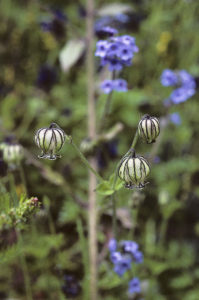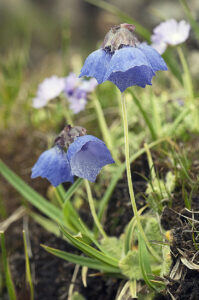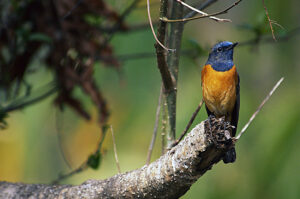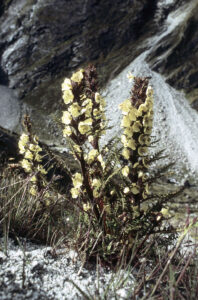Kaj Halberg - writer & photographer
Travels ‐ Landscapes ‐ Wildlife ‐ People
Rainy season in Nepal
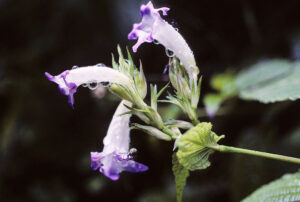

Rain has been pouring for days, occasionally with very short breaks, and we have only had glimpses of the sun. We have been negotiating several landslides and wading along flooded trails, tormented by mosquitos and leeches.
To avoid being bitten by the leeches, I am only wearing a T-shirt, shorts, and sandals under the poncho. This makes it much easier to spot the leeches and remove them, when they attach themselves to my legs. Some of them, however, manage to hide between my toes, and I only discover them, when my sandal gets even more slippery from the oozing blood.
Raindrops find their way down inside my neckline, and my T-shirt is drenched. My camera is tucked away in my backpack. Through the rain, I hear a familiar call: ”Here, Sir!” My guide Ganga Thapa has taken cover in one of the tiny tea shops along the trail. My two porters, Hari and Shyam, are far behind.
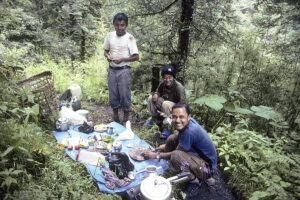
In the lower valleys, too, the rainy season has a special charm to it, supplying you with very beautiful experiences, which would not be possible at other times of the year. This morning, when the sun was out in the oak forest for a short period of time, countless water drops, which were clinging to Strobilanthes attenuata flowers, were shining like a thousand tiny suns, while a pair of green-tailed sunbirds (Aethopyga nipalensis) were hovering in front of them.
As Ganga and I are seated in the tea house, staring into the fog, a small opening appears in the cloud cover, revealing a perpendicular mountain wall on the other side of the valley, a few hundred metres away. The lower part of the mountain is covered in a dense and dark forest of Himalayan silver fir (Abies spectabilis), further up giving way to an open forest of red-barked Himalayan birches (Betula utilis) and dense thickets of Rhododendron campanulatum.
Above the forest, the grey rock is black in places, speckled by the rain, which, further up, is replaced by newly fallen snow. In the sunshine, this snow is a blinding white, which, as the sun sets, turns yellow and finally pink, before another greyish-black cloud surges up from the valley, enveloping the mountain.
Most of the plant species mentioned here are described in detail on the pages Plants: Himalayan flora 1, 2, and 3.
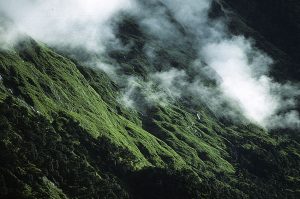
We negotiate an extremely steep trail down into the subtropical Tamba Valley, followed by a steaming hot and humid hike along the river. The flat valley floor is dominated by paddy fields, whereas the mountain slopes at this altitude are mostly covered in forests of chir pine, or long-leaved pine (Pinus roxburghii), a ubiquitous tree in the Himalaya between 1,000 and 2,100 m altitude. The needles of this species grow up to 38 cm long. Turpentine, which is utilized in folk medicine, is extracted from its timber, and the bark yields tannin, used in dyeing. Its seeds are edible.
Patches of more humid forest are found here and there, dominated by an oak, Quercus lamellosa, by some authorities called Cyclobalanopsis lamellosa, and various chestnuts of the genus Castanopsis, which have edible fruits. Other species include a tree fern, Cyathea spinulosa, and a screw palm, Pandanus nepalensis.
In open areas, I observe shrubs like Osbeckia stellata, of the melastoma family, with gorgeous reddish-violet flowers, the prickly Mimosa rubicaulis, which is often scrambling over other bushes, and Callicarpa macrophylla, of the mint family (Lamiaceae), which may reach a height of 3 m. It has dense clusters of pretty, violet inflorescences.
Various herbs grow along the trail, including Justicia adhatoda of the acanthus family, Aeginetia indica of the broomrape family, which is parasitic on various grass species, and the beautiful Martynia annua of the sesame family, which is introduced from America, but has become naturalized in many lower Himalayan valleys.
The birds in the valley are typical inhabitants of the subtropical zone. Among others, I observe magpie robin (Copsychus saularis), long-tailed shrike (Lanius schach), crimson sunbird (Aethopyga siparaja), and red-billed blue magpie (Urocissa erythrorhyncha). Along the river, I notice plumbeous redstart (Phoenicurus fuliginosus) and blue whistling-thrush (Myophonus caeruleus), the latter having a beautiful song with undulating whistling sounds.

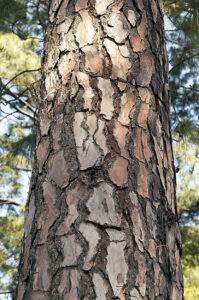
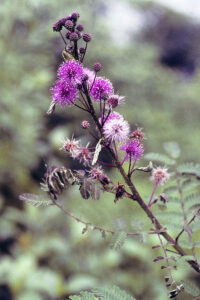
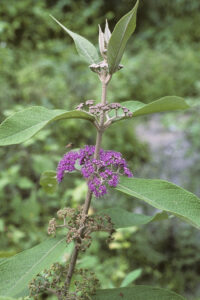
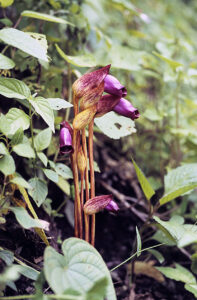
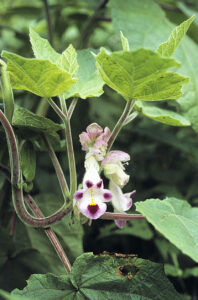
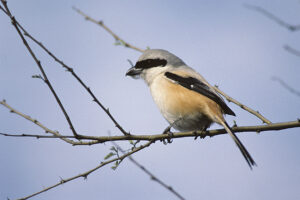
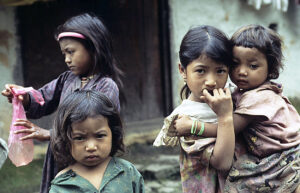
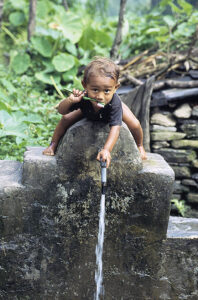
An extremely steep trail leads up to Simigaon, crossing several landslides. Above this village, the Rolwaling Valley is only sparsely inhabited, the major part of it covered in lush forests. Below c. 3,000 m altitude, various oaks (Quercus) and maples (Acer) dominate, their trunks often hidden beneath a thick cloak of mosses, ferns, begonias, and other epiphytes.
On sun-exposed rocks, I find numerous clusters of Chlorophytum nepalense. Originally, this plant was a member of the huge lily family (Liliaceae), but was since moved to the family Anthericaceae, and later to the agave family (Agavaceae), which is now treated as a subfamily, Agavoideae, of the asparagus family (Asparagaceae). Here and there, a creeping wintergreen, Gaultheria trichophylla, forms dense mats, covering the rocks. When in fruit, this species is easily identified by its bright blue, almost luminous, edible berries. In the Himalaya, this genus comprises seven species.
More humid, moss-grown rock-walls are often covered in dense vegetation of various balsams (Impatiens). In the Himalaya, this genus comprises at least 41 species, many of which are very difficult to identify. Other plants on these rocks include several begonia species, a yellow orchid, Spathoglottis ixioides, and a yellow violet, Viola wallichiana. About 20 species of violet are found in the Himalaya, most of them very similar. However, only a few species have yellow flowers.
Many other herbs grow along the trail, including Himalayan ginseng (Panax pseudoginseng), which is much utilized as a medicinal plant by the Naga people of north-eastern India. They also eat the leaves as a vegetable. Other plants include an aster, Aster albescens, with pale violet or whitish flowers, a red knotweed, Bistorta amplexicaulis, and Roscoea purpurea, Cautleya spicata, and various Hedychium species, all belonging to the ginger family. A strawberry species, Fragaria daltoniana, is easily identified by its berries, which are up to 3 cm long. Unfortunately, they have a rather insipid taste.
Birdlife in these forests is rich, including numerous warblers, flycatchers, and timaliids, but in the rainy season they are remarkably silent, and you don’t notice them much. Their breeding season is over, and adult birds are busy building up fat deposits for the coming winter, while their fledged young learn from them.
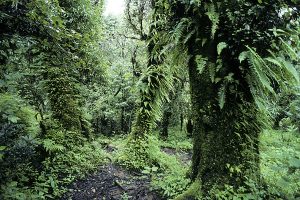
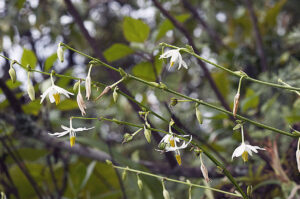
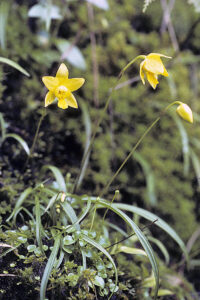
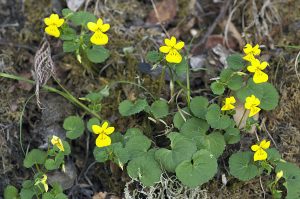
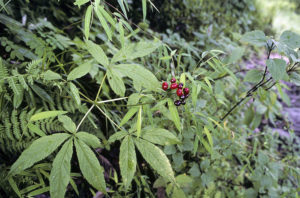
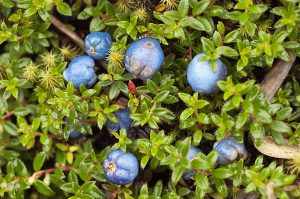

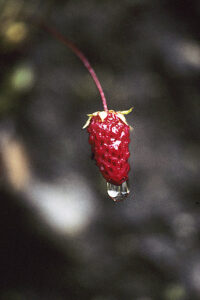
Vegetation in these clearings is often lush, including a very common, yellow-flowered poppy, Meconopsis paniculata, which can grow to a height of 2 m. Altogether, 17 species of these gorgeous poppies are found in the Himalaya, some of which, incidentally, are cultivated in Europe. Meconopsis species readily hybridize, sometimes making them difficult to identify. However, M. paniculata, M. regia, and the small, extremely hairy M. horridula, are easily recognized. Many of these poppies often thrive on grazing grounds, as grazing animals avoid them.
Numerous other plants grow in the kharkas, including Pleurospermum benthamii, an umbellifer, which may grow to 2 m tall, two louseworts with red flowers, Pedicularis megalantha and P. siphonata, a blue lily, Lilium nanum, two yellow composites, Senecio diversifolius and Ligularia amplexicaulis, and a milk parsley, Selinum wallichianum.
Around 3,500 m, the forest is far more open, mainly consisting of scattered junipers (Juniperus). On the northern side of the river, they soon vanish, giving way to grazing grounds and fields, in which highland barley and various vegetables, including leaf mustard (Brassica juncea), are cultivated. The area south of the river, however, is uninhabited, and the slopes are covered in thousands of Himalayan birches, their branches often draped with flowing old man’s beard lichens (Usnea). A fascinating account of these lichens is presented on the page Quotes on Nature.
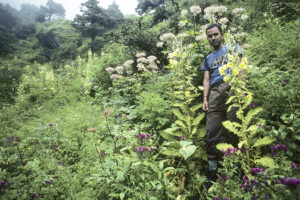
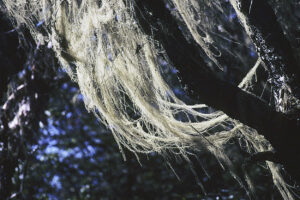
Above Na, the northern side of the river is also uninhabited, but yaks and goats are grazing here. Naturally, this grazing affects the vegetation, but, nevertheless, the flora in this area is surprisingly rich. Shrubs include two junipers, Juniperus recurva and J. squamata, Tibetan sea-buckthorn (Hippophaë tibetana), Himalayan shrubby cinquefoil (Potentilla fruticosa var. rigida), and a dwarf rhododendron, R. lepidotum, with small red or white flowers.
Numerous herbs grow between the shrubs, including a dark-blue primrose, Primula wollastonii, a strange-looking lousewort, Pedicularis trichoglossa, Cyananthus incanus, of the bellflower family, and an aster, Aster diplostephioides, with flowers up to 8 cm across. Wet areas are often dominated by buttercup (Ranunculus) and cranesbill (Geranium), sometimes together with a beautiful yellow primrose, Primula sikkimensis, which grows to almost 1 m tall.
Birdlife is sparse in this area, mostly comprising passerines, including rufous-breasted accentor (Prunella strophiata), beautiful rosefinch (Carpodacus pulcherrimus), and blue-fronted redstart (Phoenicurus frontalis).
The Rolwaling Valley makes its beginning at the mouth of the enormous Trakarding Glacier, at an altitude of c. 4,500 m. From here, a risky trail follows a ridge of deposited moraine, stretching alongside the glacier, and then climbs over the Tashi Labsta Pass (5755 m), which leads into Sagarmatha National Park. Behind an embankment of moraine in front of the glacier, melt water has created a large lake, named Tso Rolpa. To prevent a devastating tidal wave, in case the bank should one day burst, a weir has been constructed, draining the lake water at a steady flow.
Around Tso Rolpa, the landscape is stony and barren, and very few plants grow here. I notice a violet composite, Allardia glabra, a pale-yellow lousewort, Pedicularis scullyana, and a peculiar saxifrage, Saxifraga brunonis, with bright yellow flowers peeping out from an entangled mass of red runners, each up to 1 m long.
